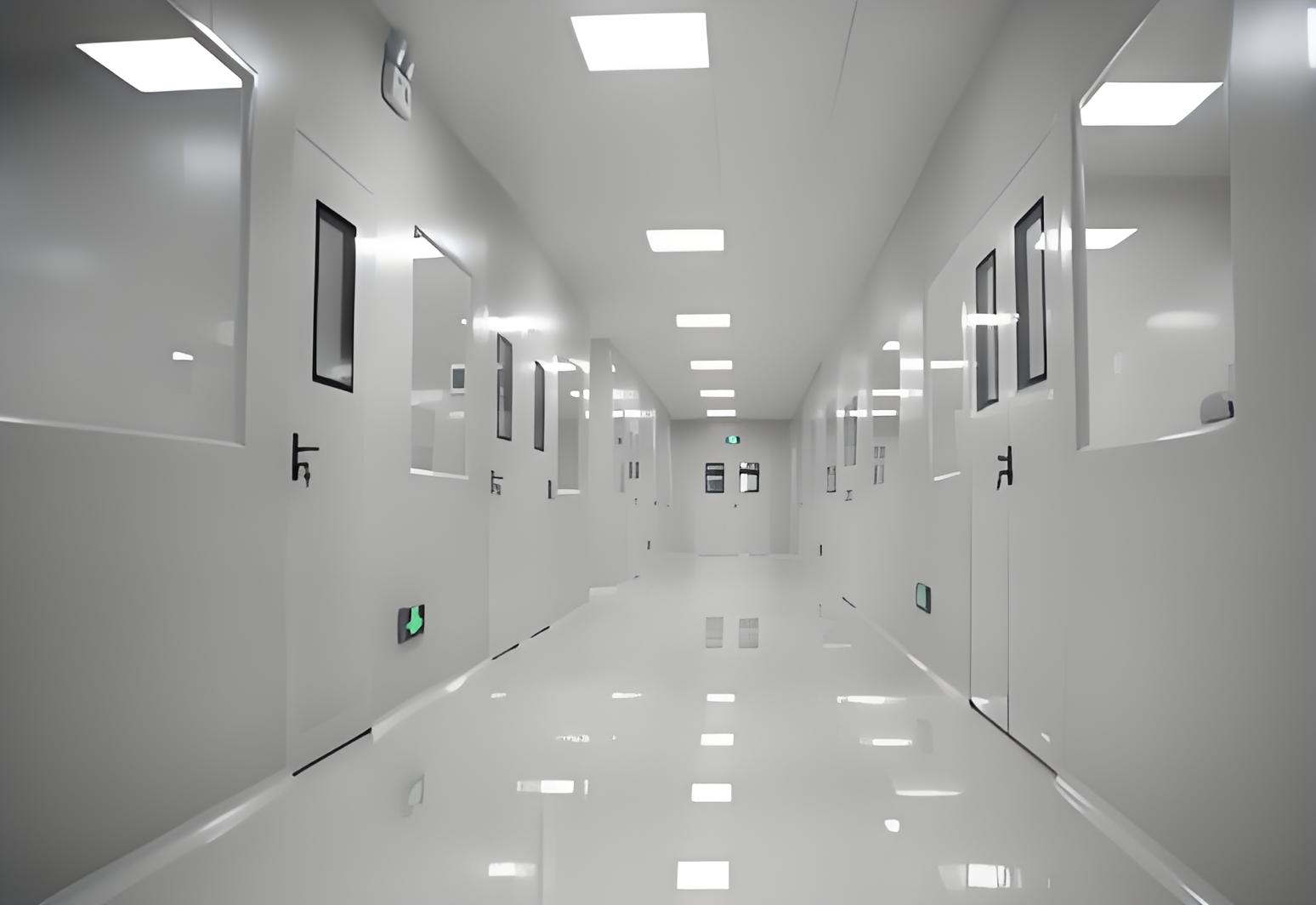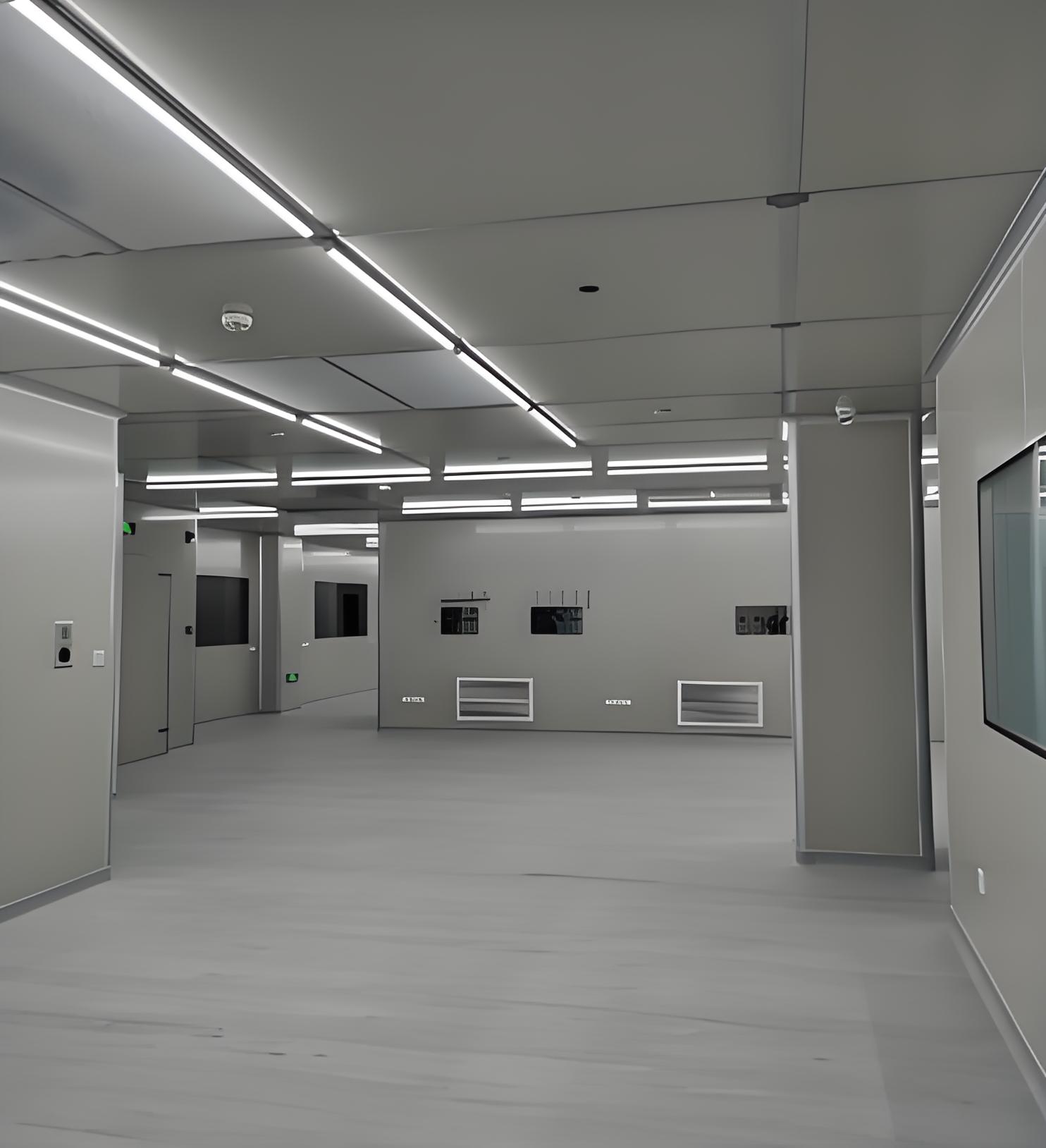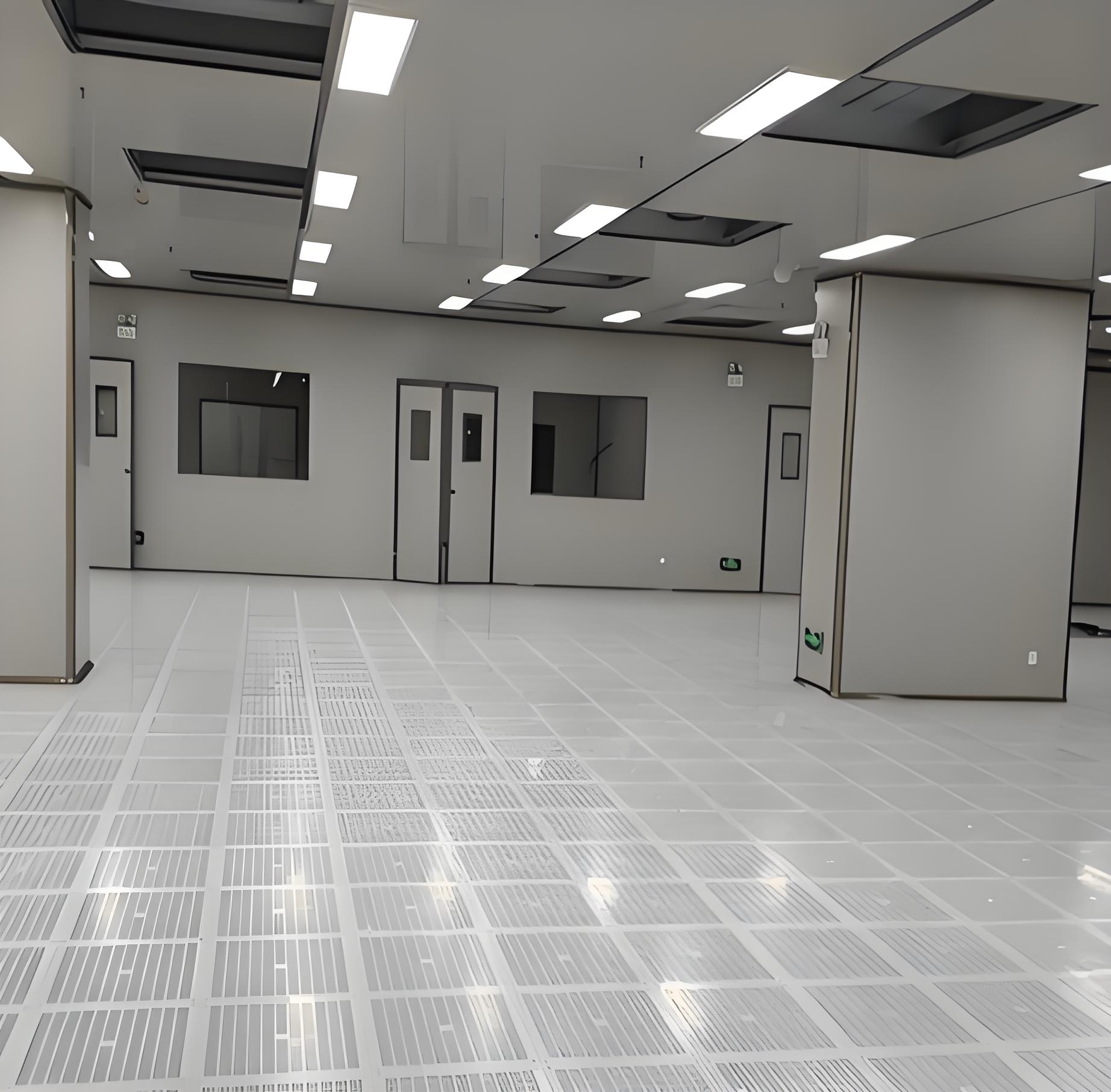




When it comes to constructing or upgrading a clean room, the duct design is often the unsung hero that ensures optimal air quality, contamination control, and regulatory compliance. A well-executed clean room duct design not only supports the overall HVAC system but also integrates seamlessly with components like HEPA filters and diffusers to maintain stringent standards in industries such as pharmaceuticals, biotechnology, and electronics manufacturing. In this article, we’ll break down the key aspects of duct design, covering materials, validation, and sourcing—from stainless steel ductwork cleanroom solutions to selecting reputable cleanroom ductwork manufacturers. Whether you’re looking to buy Fan Filter Unit products or understand how to select cleanroom ceiling diffuser options, this guide provides actionable insights to help you achieve efficiency and reliability. With factors like cleanroom duct cleaning validation and GMP cleanroom HEPA filter integration playing pivotal roles, a strategic approach to design can prevent costly errors and ensure long-term performance.

Clean room duct design is the backbone of any controlled environment, directing airflow to minimize particulate contamination and maintain temperature, humidity, and pressure differentials. Unlike standard HVAC systems, clean room ducts must adhere to strict guidelines, such as those from ISO standards or FDA regulations, to ensure air purity. The design process involves calculating airflow rates, pressure drops, and layout configurations to avoid turbulence or dead zones that could harbor contaminants. For instance, in a GMP cleanroom HEPA filter setup, ducts must deliver uniform air distribution to maximize filter efficiency. Key considerations include material selection—like opting for stainless steel ductwork cleanroom installations for durability—and coordinating with cleanroom piping system design to integrate utilities like gas lines or coolant pipes without compromising air quality. By focusing on these fundamentals, engineers can create a system that supports critical operations, from laboratory research to semiconductor production.
In high-stakes environments, stainless steel ductwork cleanroom solutions are preferred due to their corrosion resistance, ease of cleaning, and longevity. Stainless steel surfaces are non-porous, reducing the risk of microbial growth or particle accumulation, which is essential in sectors like pharmaceuticals where GMP cleanroom HEPA filter standards demand impeccable hygiene. Additionally, this material withstands harsh cleaning agents used during cleanroom duct cleaning validation, ensuring that the system remains compliant over time. When sourcing from cleanroom ductwork manufacturers, it’s important to specify grades like 304 or 316 stainless steel, which offer superior performance in humid or corrosive conditions. By integrating stainless steel ducts into your clean room duct design, you enhance not only safety but also operational efficiency, as these systems require less maintenance and reduce downtime.
Cleanroom duct cleaning validation is a critical process that verifies the duct system’s cleanliness and functionality, ensuring it meets regulatory requirements. This involves periodic testing, such as particulate monitoring and microbial sampling, to confirm that ducts are free from contaminants that could compromise air quality. In a comprehensive clean room duct design, validation protocols should be built in from the start, aligning with standards like ISO 14644. For example, after installing ducts from cleanroom ductwork manufacturers, validation might include airflow visualization tests to check for leaks or obstructions. This step is especially vital when integrating GMP cleanroom HEPA filter units, as any residue in the ducts can reduce filter efficacy. By prioritizing validation, facilities can avoid non-compliance issues and extend the lifespan of their systems.
A holistic clean room duct design must account for cleanroom piping system design, which involves routing utilities like water, gas, or vacuum lines without interfering with airflow. Poor integration can lead to contamination risks or inefficient space use. For instance, in a clean room with GMP cleanroom HEPA filter installations, pipes must be sealed and positioned to avoid disrupting laminar airflow. Coordination between duct and piping designs ensures that both systems support the clean room’s function—whether it’s for chemical processing or medical device manufacturing. When working with cleanroom ductwork manufacturers, discuss how piping can be routed alongside or within duct assemblies to minimize footprint. This approach not only optimizes layout but also simplifies maintenance, contributing to a more robust environment.
Choosing the right cleanroom ductwork manufacturers is essential for achieving a reliable clean room duct design. Look for manufacturers with experience in clean room applications, certifications like ISO 9001, and a portfolio that includes stainless steel ductwork cleanroom projects. They should offer custom solutions tailored to your needs, such as designs that accommodate GMP cleanroom HEPA filter integrations or support cleanroom duct cleaning validation. Additionally, evaluate their ability to collaborate on cleanroom piping system design to ensure seamless installation. By vetting manufacturers thoroughly, you can avoid common pitfalls like poor craftsmanship or material defects, which could lead to costly revisions or compliance failures.
GMP cleanroom HEPA filter units are indispensable in maintaining air purity, and their effectiveness hinges on a well-planned clean room duct design. These filters remove 99.97% of particles as small as 0.3 microns, critical for meeting Good Manufacturing Practice (GMP) guidelines. The ducts must deliver air evenly to the filters to prevent bypass or overload, which is why design aspects like airflow velocity and duct sizing are crucial. When you buy Fan Filter Unit products, ensure they are compatible with your duct layout—for instance, positioning them downstream of stainless steel ductwork cleanroom sections to minimize contamination risk. Regular cleanroom duct cleaning validation also helps monitor filter performance, ensuring that the entire system operates at peak efficiency.

Cleanroom diffuser manufacturers play a key role in fine-tuning air distribution within a clean room, working in tandem with the duct design. Diffusers disperse filtered air uniformly, preventing stagnant zones and maintaining pressure gradients. When selecting products, consider factors like airflow patterns and material compatibility—for example, stainless steel diffusers pair well with stainless steel ductwork cleanroom systems. Reputable manufacturers can provide guidance on how to select cleanroom ceiling diffuser models that align with your clean room duct design, such as those that integrate with GMP cleanroom HEPA filter outputs. This collaboration ensures that air delivery supports contamination control, enhancing overall system reliability.
If you’re planning to buy Fan Filter Unit (FFU) components, it’s important to align them with your clean room duct design. FFUs are self-contained modules that include a fan and HEPA filter, often used in modular clean rooms. When selecting an FFU, evaluate factors like noise levels, energy efficiency, and compatibility with existing ducts. For instance, in a system with stainless steel ductwork cleanroom elements, choose FFUs that match the airflow capacity and pressure requirements. Additionally, consider how the FFU will fit into broader aspects like cleanroom piping system design or cleanroom duct cleaning validation. By making informed choices, you can enhance airflow control and reduce operational costs.
Understanding how to select cleanroom ceiling diffuser options is vital for optimizing air distribution in your clean room duct design. Diffusers should be chosen based on the clean room’s classification and airflow needs—for example, laminar flow diffusers for high-precision areas. Key criteria include material (e.g., aluminum or stainless steel for durability), airflow capacity, and ease of cleaning to support cleanroom duct cleaning validation. Consult with cleanroom diffuser manufacturers to ensure the diffuser complements other components, such as GMP cleanroom HEPA filter systems or stainless steel ductwork cleanroom setups. A well-selected diffuser minimizes turbulence and maximizes contamination control, contributing to a safer environment.
Q1: What makes stainless steel ductwork better for cleanrooms compared to other materials?
A1: Stainless steel ductwork is ideal for cleanrooms due to its non-porous surface, which resists corrosion, inhibits microbial growth, and withstands aggressive cleaning agents. This makes it a reliable choice for maintaining hygiene in GMP cleanroom HEPA filter environments and simplifies cleanroom duct cleaning validation.
Q2: How often should cleanroom duct cleaning validation be performed?
A2: Validation frequency depends on the clean room classification and usage, but it’s typically conducted every 6–12 months or after significant modifications. Regular validation ensures compliance with standards and maintains the efficiency of components like GMP cleanroom HEPA filter units.
Q3: What should I look for in cleanroom ductwork manufacturers?
A3: When selecting manufacturers, prioritize those with relevant certifications, experience in stainless steel ductwork cleanroom projects, and a proven track record in integrating systems like cleanroom piping system design. They should also offer support for cleanroom duct cleaning validation.
Q4: How does cleanroom piping system design interact with duct design?
A4: Cleanroom piping system design must be coordinated with duct layout to avoid conflicts that could compromise airflow or contamination control. For example, pipes should be routed to not obstruct ducts serving GMP cleanroom HEPA filter units, ensuring both systems function harmoniously.
Q5: What factors are crucial when I buy Fan Filter Unit for a clean room?
A5: Key factors include airflow capacity, filter efficiency (e.g., HEPA or ULPA), noise levels, and compatibility with your clean room duct design. Also, consider how the FFU will be maintained in line with cleanroom duct cleaning validation protocols.
In summary, a successful clean room duct design requires careful planning, from material selection to validation and sourcing. By incorporating elements like stainless steel ductwork cleanroom solutions and partnering with expert cleanroom ductwork manufacturers, you can build a system that meets rigorous standards. Don’t overlook the importance of cleanroom duct cleaning validation or the integration of GMP cleanroom HEPA filter and diffuser components. With these strategies, your clean room will achieve the purity and reliability needed for critical applications.